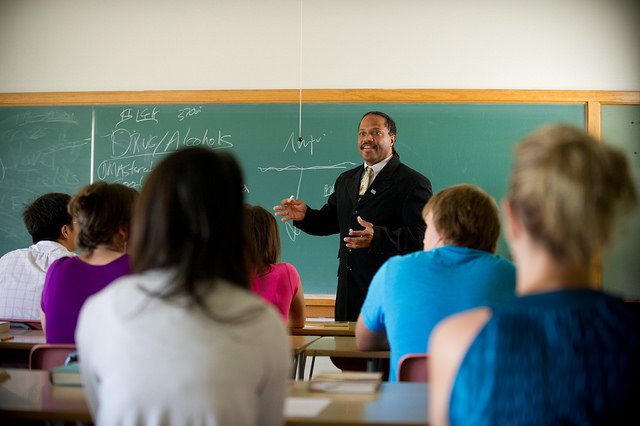Over the years, critics of universities and faculty have had great fun pointing out how little university faculty teach. Faculty, these critics contend, are the root of the problem of everything from rising college costs to the influence of political ideology on campus. The solution is to make faculty work more, which translates into teach more. Yet, I find that there is a great misunderstanding about the nature of faculty teaching loads. Faculty teaching dramatically different loads depending on the type of institution they work at and what other responsibilities they hold. Today, I will explain faculty teaching loads and how they differ across different higher education institutions.

When you ask faculty how much they teach, you will often get an answer along the lines of “I teach a 2-1” or “I teach a 3-3.”
What does this mean?
Faculty teaching loads are expressed in an X-Y fashion where X equals the number of courses taught in the fall and Y equals the number of courses taught in the spring.
So, for example, this year I taught a 2-0. This means I taught two courses in the fall and none in the spring.
Almost all faculty are on nine month contracts and discuss their load in reference to the fall and spring. Any teaching in the summer or in special terms (such as a shortened May term) are considered above and beyond (and compensated separately).
Now that you have the lingo down, let’s take a look at the standard loads that faculty teach.
4-4
This is typically the highest teaching load you will find at a college or university. While many community college instructors will teach a higher 5-5 load, a 4-4 is the highest you tend to find in a four-year institution. A 4-4 load indicates an exclusively teaching assignment and would be most common for instructors, lecturers, and other non-tenure earning positions. There would be little to no expectation for research or service for anyone teaching a 4-4.
3-3
Many faculty teaching at small private universities or regional comprehensive universities hold a 3-3 load. As a result, the expectations for research are typically pretty minimal. For example, while some evidence of research might be expected for earning tenure, the primary criteria for tenure is teaching competence and excellence. However, unlike someone teaching a 4-4, faculty teaching a 3-3 are expected and often have quite high service expectations (advising, committees, and other important activities to support the work of the institution).
2-2
Faculty teaching at research universities most commonly teach a 2-2 load. These courses might be graduate or undergraduate (they are differentiated in terms of load). In addition to teaching two classes per semester, research faculty are expected to participate in university service as well as exhibit high levels of research activity.
Less than a 2-2
There are research faculty that teach less than two courses per year. This happens usually for grant activity or administrative appointments. You may have heard of a faculty member that has a grant that “buys” them out of two courses. What does this mean? Simply put, the grant pays for their salary for the equivalent of two courses (or 25% of their total salary). This enables the faculty member to focus more of their time on completing the grant project. Likewise, some faculty have administrative appointments. As I noted above, I teach a 2-0 because I need the additional time to direct SMU’s Center for Teaching Excellence. Deans, provosts, and presidents are examples of faculty (with tenure) that essentially teach a 0-0 so they can focus on their administrative work.
Teaching Load Misconceptions
One of the most common misconceptions of faculty teaching loads that come from everyone from the pubic to legislators is that faculty teaching a 2-2 are working half as hard as those teaching a 4-4. There was even a truly uninformed bill proposed in North Carolina that all faculty would teach a 4-4 load.
From a load perspective, all faculty essentially spend the same number of hours per week. The only question is how teaching, research, and service get allocated. If I’m teaching a 4-4 load, then my FTE allocation is 100% teaching, 0% research, and 0% service. If I’m on a 2-2 load, my FTE allocation is 50% teaching, 37.5% research, and 12.5% service.
Again, the issue is not working more, but working on what?
It seems ludicrous to suggest faculty teaching a 2-2 are only working six hours per week, but that’s precisely what some critics want to insinuate. As anyone who teaches will tell you, the amount of time in the classroom is only a piece of the time needed to even adequately teach (to say nothing of teaching well). Preparation, grading, meeting with students, and student correspondence take far more time than the actual hours of instruction.
I hope this helps clarify how faculty teaching loads work across different institutions so that the next time you hear someone take a jab at lazy college faculty, you’ll be able to explain the importance of context and detail in understanding this issue.
After all, isn’t this what college faculty help teach us to understand?

